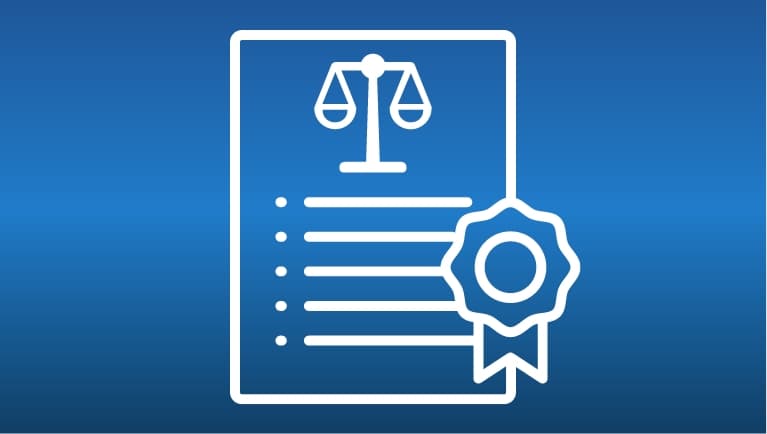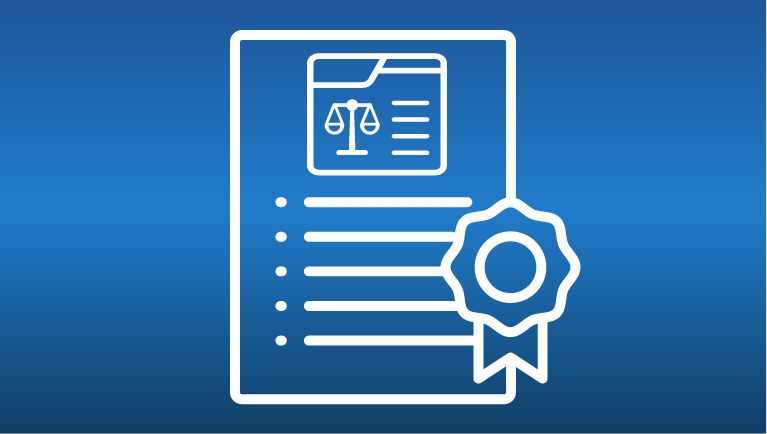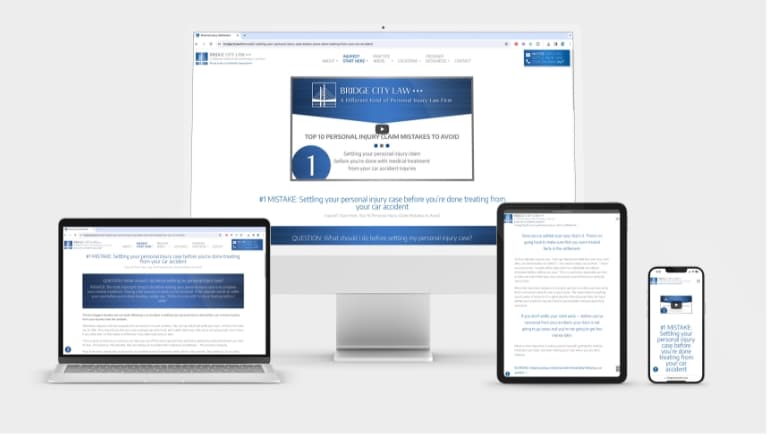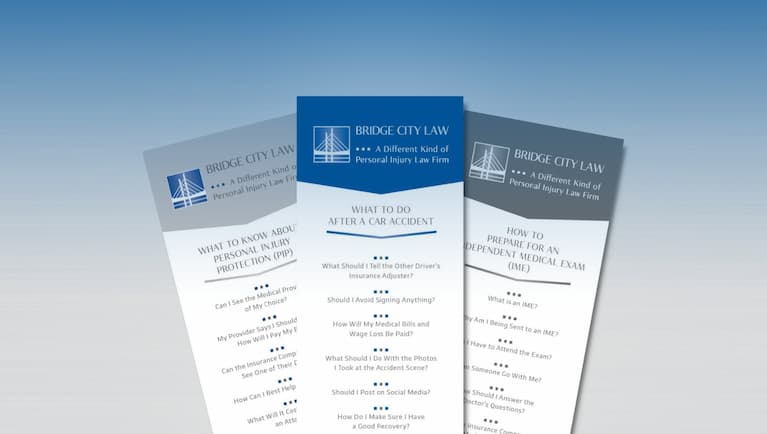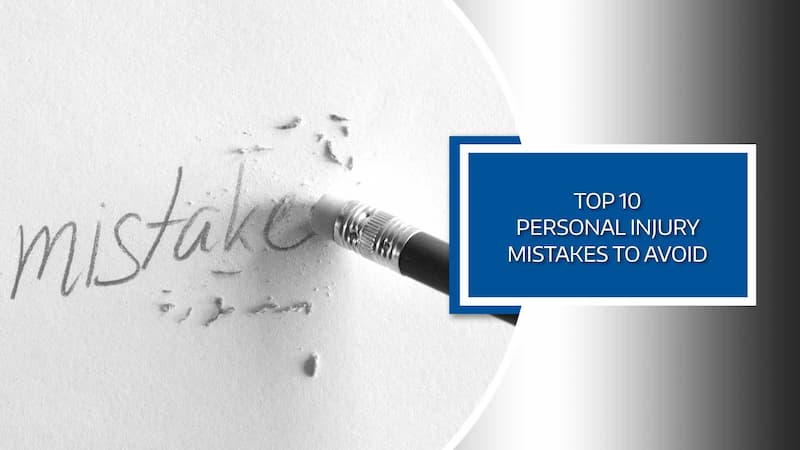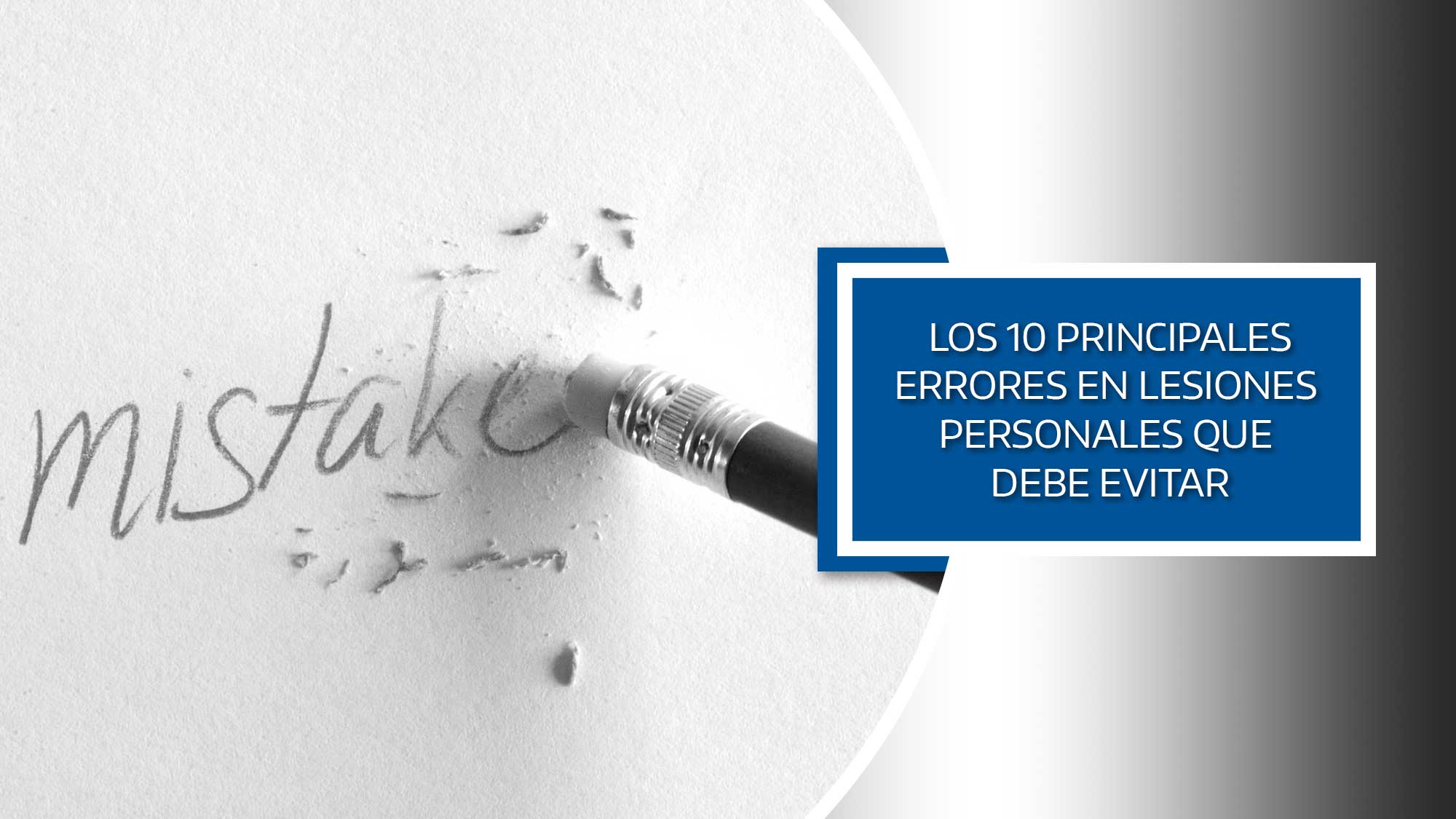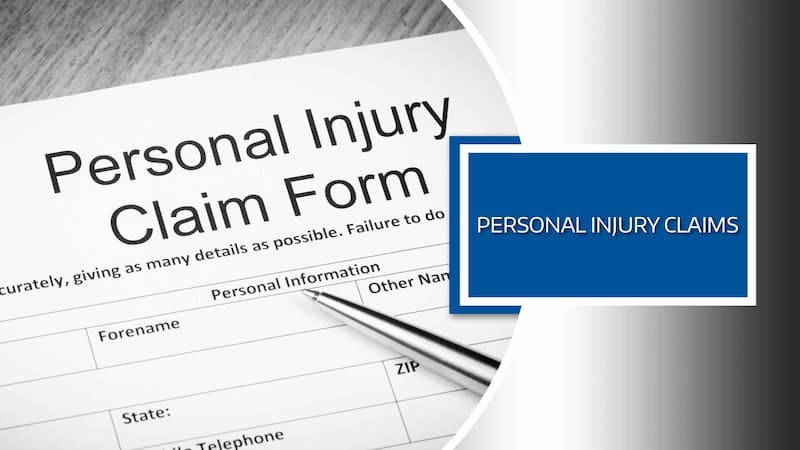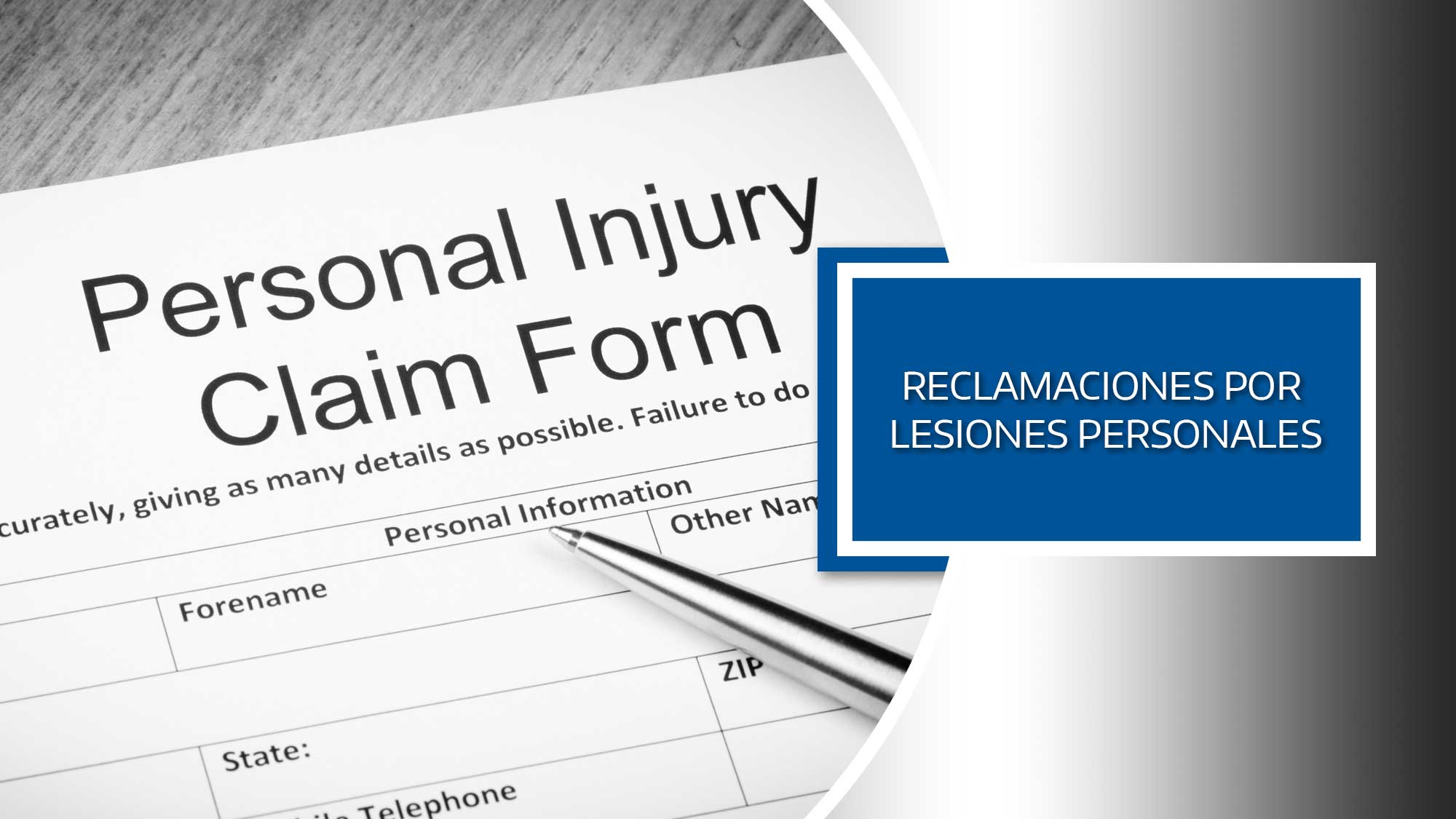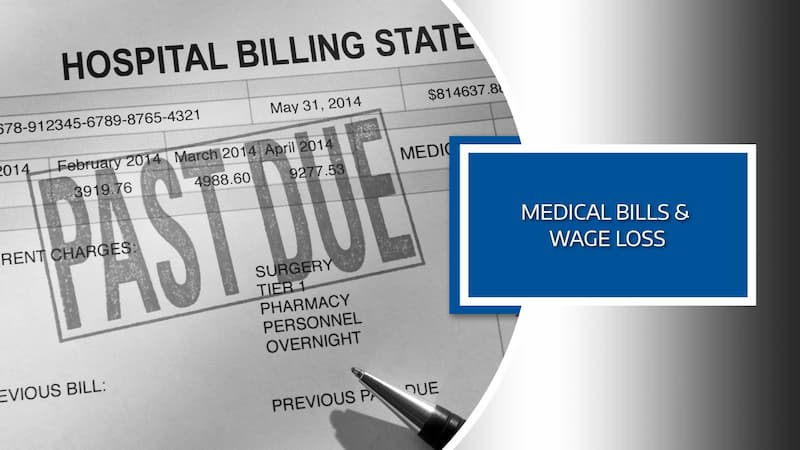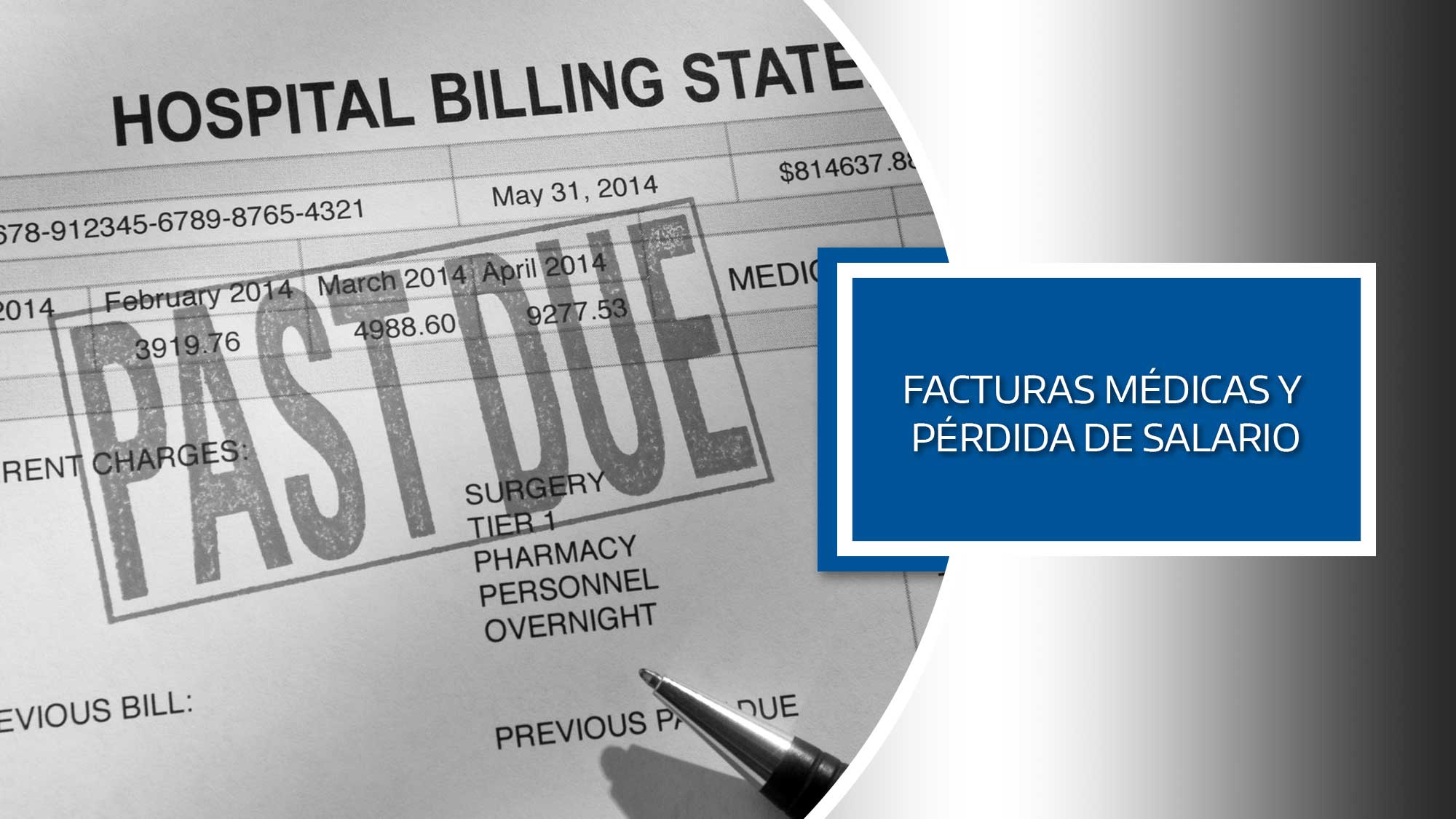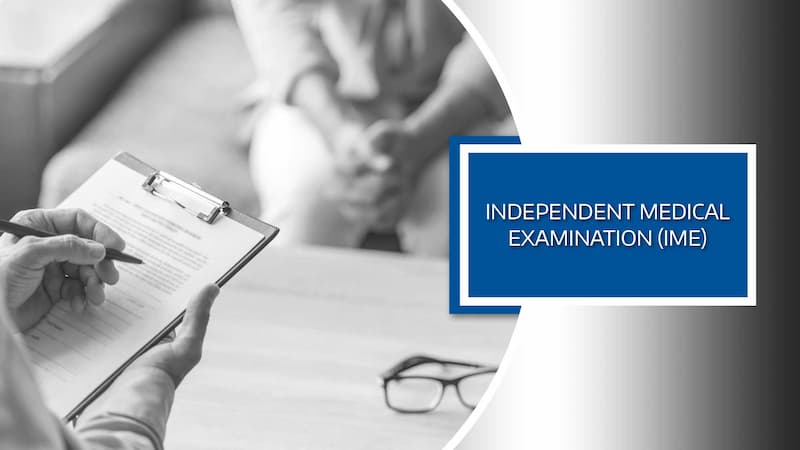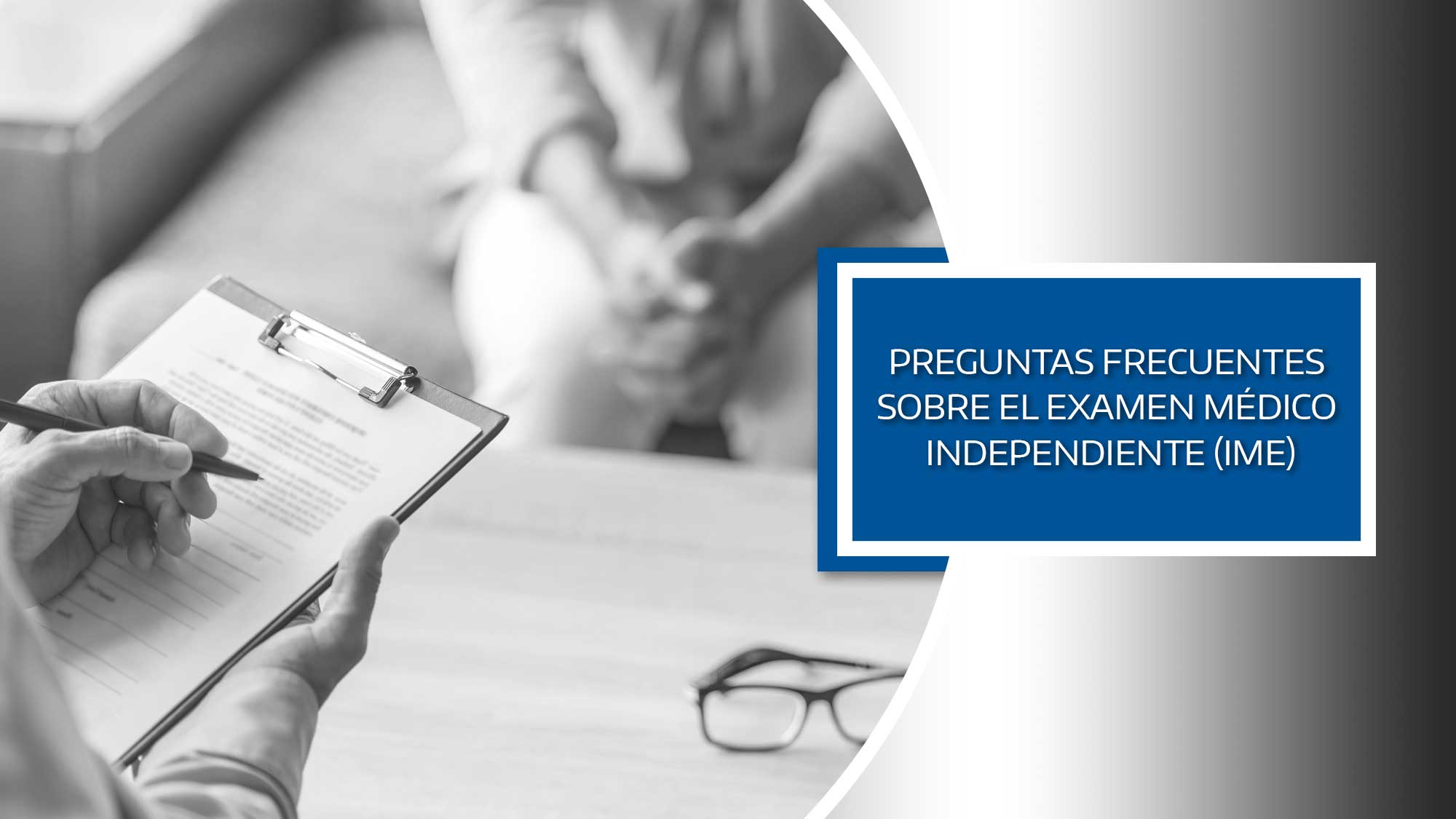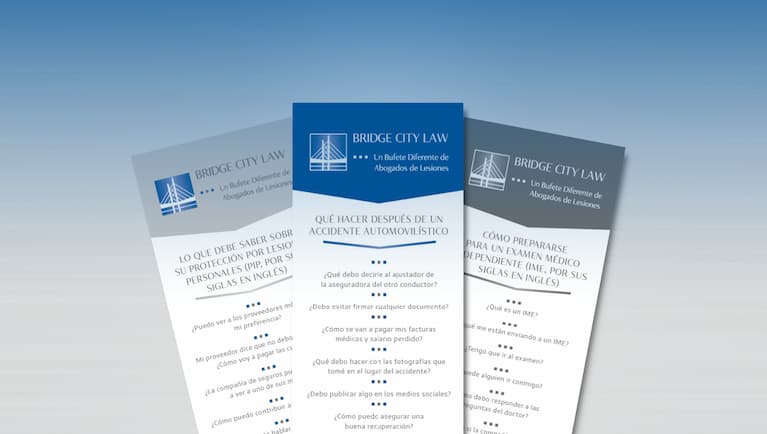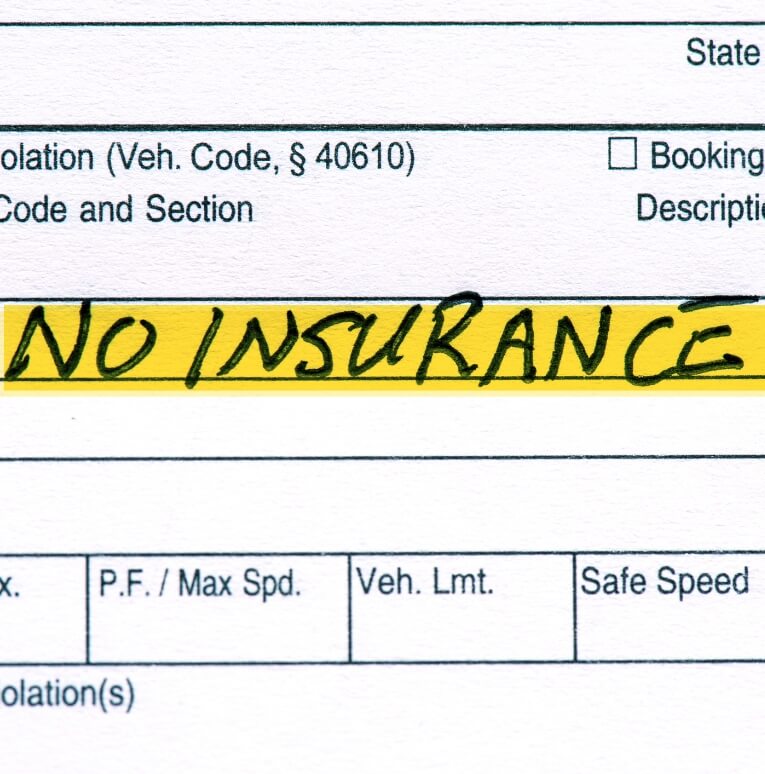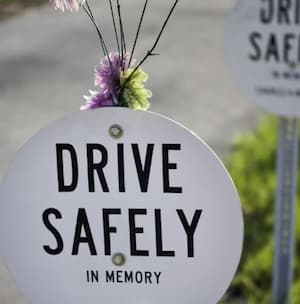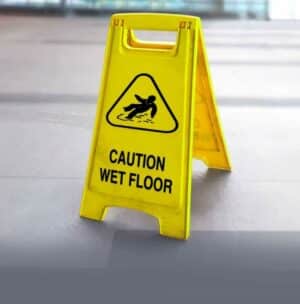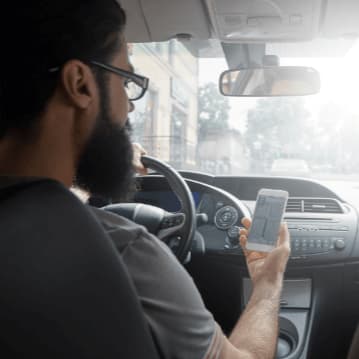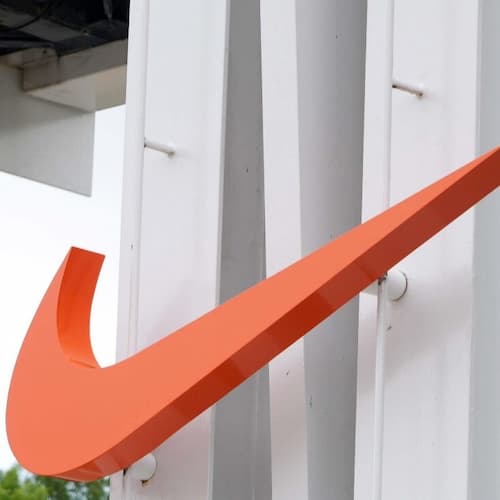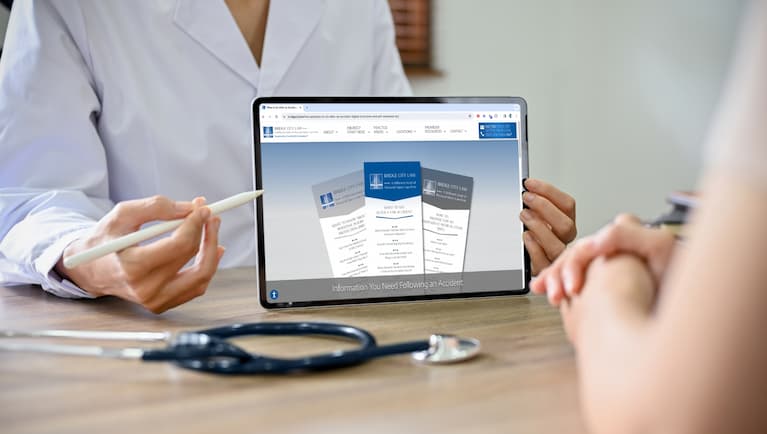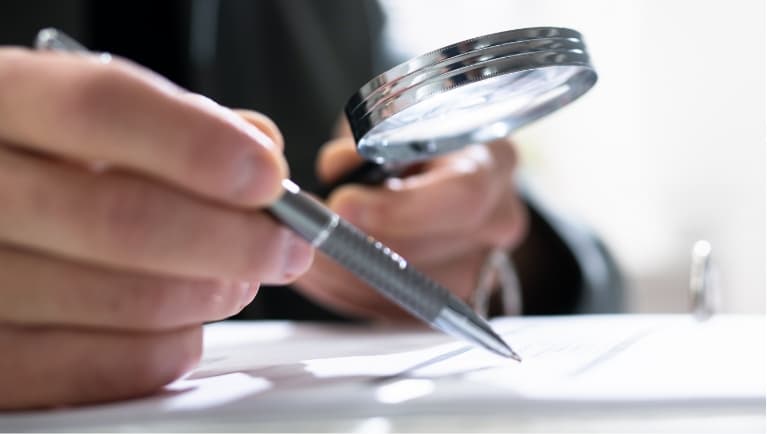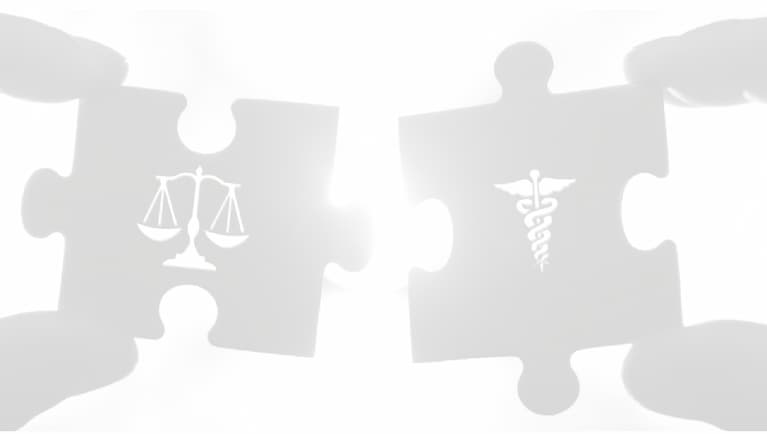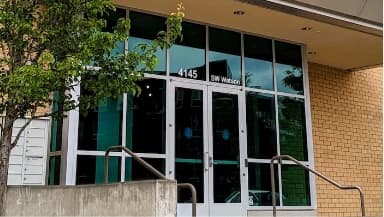LA PRÁCTICA DEL CUIDADO:
A PROVIDER’S GUIDE
PERSONAL INJURY CLAIM
RESOURCES FOR
HEALTHCARE
PROFESSIONALS
Control De Daños
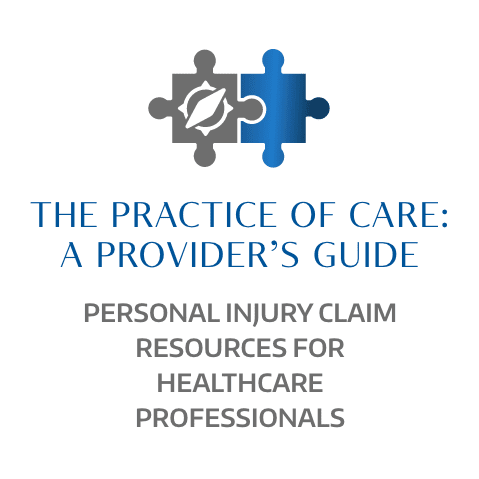

HOW TO HELP YOUR PATIENTS
Avoid Sinking Their Personal Injury Claims


Whether you’ve been providing medical care for people injured in an accident for 10 months or 10 years, there’s always more to understand about the pitfalls your patients can encounter due to the ever-changing rules of insurance companies. We developed our blog and video series to help you communicate the vital information your patients need to protect themselves.
VIDEOS
ARTÍCULOS
#1 What is the critical information I need from patients to help them following a car accident?
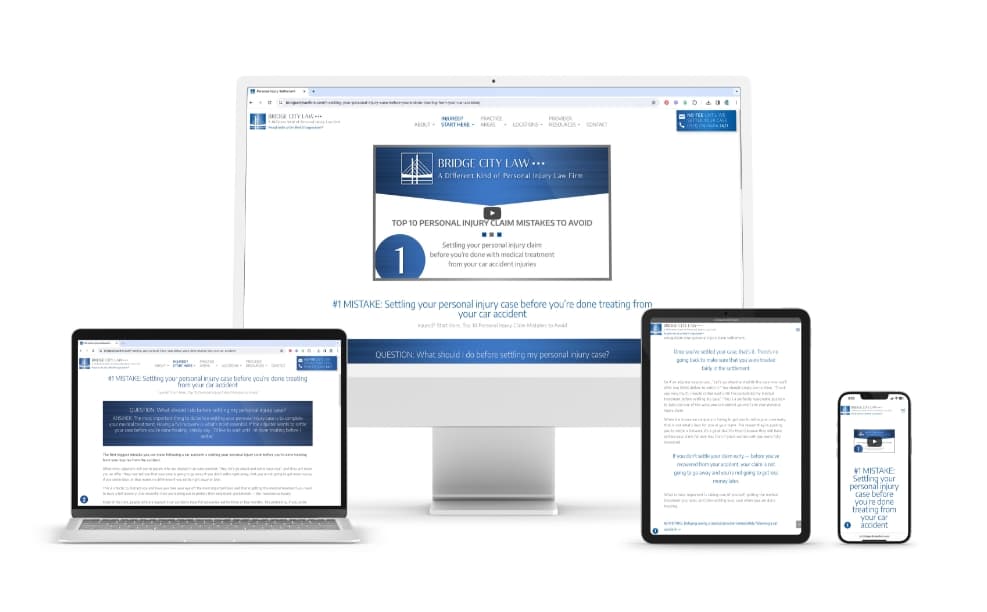










When we meet with a potential client, during our first meeting, we always ask about the details surrounding their accident and also if they’ve had any prior similar injuries or problems with their neck or back in the past. It’s not unusual for us to receive incomplete and inaccurate information at the beginning of the conversation. It’s only after asking the same question in a couple of different ways do we get the information about their accident that we need to advise and guide them through the personal injury claim process.
What we’ve learned over decades of having these critically important conversations with our clients is that It really does come down to the art of asking the right questions and also framing the questions in different ways, so that you get a thorough and complete response.
To protect your credibility as a medical provider and get accurate information to help protect your patient’s claim, remember to ask the critical questions in two or three different ways. This will protect your credibility, protect your patient’s rights, and provide the information needed so that you’re paid for the medical treatment you provide.
#2 Does my patient need a personal injury attorney if they've been in a car accident?











Sixty percent of the folks we talk to who’ve been injured in an auto accident, do not need a lawyer to represent them. This is true for most personal injury attorneys, which is why we offer a no-fee, no-obligation initial consultation for anyone who’s been in an accident. Even if your patient doesn’t need to hire a lawyer, it will be a tremendous benefit to them to have a consultation with an experienced attorney.
During our first conversation with someone who has been in a collision, we’ll ask a number of questions to help us understand the details surrounding the accident and information about their injuries and medical history. This will help us evaluate and determine whether it’s in your patient’s best interest to have an attorney representing them. If there is no economic benefit for them, we’ll let them know straight away.
If we don’t represent your patient, we will still take the time during the consultation to advise them on how to protect their rights and their personal injury claim.
If it is in your patient’s best interest for us to represent them, we will guide them through the personal injury process — advising them each step along the way, and advocate for their rights.
#3 How do I know if my patient has a personal injury claim due to a car accident?
In Oregon, the standard is, “Did the other person who hit your patient’s car drive the way a reasonably prudent person would drive?”, “Was the person driving the other car, doing so in a safe manner?” A reasonably prudent person doesn’t run red lights, doesn’t blow through stop signs, doesn’t drive intoxicated or on drugs, doesn’t drive if they’re too sleepy, or goes 50 miles an hour in a 30-mile-an-hour speed zone.
That’s pretty simple standards to help understand whether the other person is in fact at fault for causing a car accident. The standard is the same when looking at how your patient was driving their car.
We offer a no-fee, no-obligation, claim evaluations for folks who have been injured in a car accident. During an initial consultation, we’ll ask a variety of questions about the details surrounding their accident and their injuries from the accident. This will help us determine if your patient does have a personal injury claim or not.
If they do have a claim, we’ll advise them on the personal injury claim process and what their options are. If it is not in their best interest to file a claim, we’ll explain to them how to protect their rights when communicating with the insurance company.
#4 What should I do if my patient's PIP is exhausted after being treated due to a car accident?
It’s understandable to assume that once your patient’s PIP benefit is exhausted there’s no other PIP coverage to use for their medical treatment. While this is true most of the time, there may well be “hidden PIP policies” that can be tapped into.
If your patient was a passenger in someone else’s car at the time of the accident and that PIP benefit becomes exhausted, you want to ask if they have their own automobile insurance policy. If they do, then there’s a second PIP policy they can access to cover their treatment.
If your patient did have a secondary PIP policy drawn from, and that becomes depleted, there is actually a third PIP policy they can access. If they were living with a family member who had a separate auto insurance policy when the collision happened, they could file a claim with that PIP policy.
It’s important to know that your patient doesn’t have to be named on the car insurance policy to access the PIP benefits — as long as they were living with the family member when the accident occurred.
If your patient’s PIP benefit runs out, by asking a few simple questions you may well find additional hidden pip policies that can be used for your patient to complete their treatment.
#5 What should my patient do if the at fault driver in a car accident doesn't have auto insurance?
In the state of Oregon, all private passenger automobile policies sold have what is called Underinsured Motorist Coverage. If your patient is injured due to the fault of someone else, who doesn’t have insurance, your patient’s insurance company will act as if they were the other person‘s insurance company.
For your patient to access this part of their policy, they will need to contact their own insurance company, or the insurance company for the car that they were in when the car accident happened, and make what’s called an “uninsured motorist claim.” This will provide the insurance benefits they need following the accident.
When your patient files an underinsured motorist claim with their own insurance company, the claims process will function very much, if not the same as if they were working with the at-fault driver’s insurance company.
If you’re comfortable talking with your patient about their personal injury claim, it’s important to let them know they can make an uninsured motorist claim with their car insurance company. Also sharing with them that they should not expect better treatment than if they were dealing with the at-fault driver’s insurance company, will set appropriate expectations.
#6 Should my patient sign a medical records release authorization for the at fault driver's insurance company?
Absolutely not.
Insurance adjusters use tactics to try and force your patient to sign the authorization form by saying, “We can’t process or settle your claim without your signed release authorization.” or “We are going to close your claim if you don’t sign the form.” Their intention is for your patient to feel they’re not being cooperative so that they’ll sign the document.
The reasons not to sign the release authorization are:
- The insurance company will need to have their signed release to evaluate their claim and in order to settle it. BUT, not until your patient is done treating.
- The other person’s insurance company is going to use any information in your patient’s medical records they possibly can against your patient.
- Your patient can respectfully respond to the insurance company’s request for them to sign the form with “I’m happy to sign the release form when I’m done treating.”
- The insurance company can’t shut down your patient’s claim and nothing bad will happen if they wait to sign the form until they’re done treating.
By explaining the reasons AND giving them a reasonable response for the insurance adjuster, we increase the likelihood they will not sign the release authorization.
#7 Can I help my patient determine what their personal injury claim is worth due to a car accident?
We’re asked this question often. The truth is — whether it’s a family member, a friend, an adjuster, or an attorney — if your patient isn’t done treating, and they tell you the monetary value of your claim — they either don’t know what they’re talking about or they’re not telling your patient the truth.
There are simply too many factors that determine what a claim is worth that need to be known before that question can be answered. It’s best to advise your patient to not listen to anyone who says they know the value of their claim or how things will go with settling their claim if they haven’t completed all the treatment. It’s simply not possible to know the value of a personal injury claim before the person injured is done treating.
If your patient has questions about the value of their claim, talking with an experienced personal injury attorney can be very helpful. We offer a no-fee or no-obligation initial consultation. We want to make sure that your patient gets their questions answered and the information they need to protect their rights and personal injury claim.
#8 What kinds of things can hurt my patient's personal injury claim due to a car accident?
Quite simply, everything that your patient does to have a full and speedy recovery helps their claim. Conversely, anything they do that prolongs their treatment and slows down their recovery hurts their claim. To ensure that your patient’s medical bills are paid for and for them to protect their personal injury claim, your patient needs to:
- Keep all of their appointments with providers
- Be consistent with doing their stretches and exercises
- Follow through with any referrals that their medical provider team gives them to help their recovery, including seeing a massage therapist, a physical therapist, or a surgeon.
Your patient following the guidance and treatment instructions their medical providers give them and the list above is what’s best for them to make a full recovery and what’s best for their personal injury claim.
#9 What should my patients do to prepare for an Independent Medical Exam (IME)?











You will find that most of your patients have never been to an Insurance Medical Exam ( IME) or have even heard the term. Their lack of knowledge about what an IME is or their assumptions about the purpose of an IME can potentially cause problems for their personal injury claim.
One of the biggest mistakes we see patients make when it comes to their IME is not preparing for it in advance and not thinking enough about their prior accidents and injuries.
When the IME doctor asks if they’ve had accidents and similar injuries in the past, and your patient answers no to that question when they actually should have answered yes — it’s usually because they haven’t taken the time to appropriately prepare for the exam and spent time thinking through their medical history.
What we see time and again is that the IME doctor will use your patient’s innocent mistake of forgetting something from their medical history to attack their credibility and say they were intentionally withholding information about their previous accidents and similar injuries. Credibility is everything when attending an IME appointment, which is why preparing for it is critical to your patient taking good care of their claim.
#10 How can the chart notes I maintain for my patients help or hinder their personal injury case due to a car accident?
When we move into the phase of the personal injury claim process where it’s time to evaluate your patient’s claim for 1) filing a lawsuit, 2) preparing for depositions, 3) arbitration, 4) trial, or 5) settlement — one of our primary focuses is your chart notes. If there are problems with the information in your chart notes, we cannot go back and edit them.
Over the years, we’ve developed some helpful chart notes do’s and don’ts to assist medical providers in developing a process and a practice for their chart notes to be as complete and consistent as possible. The reality is no chart note is bulletproof. You simply do your best with your chart noting process. The goal is to master your chart note practice to make it harder for the insurance company or the defense attorney to attack the information in your chart notes, your credibility, or your patient.
Check out this article on our website for guidelines to help improve your chart notes process and practice.
MORE PERSONAL INJURY ARTICLES & RESOURCES
To Help You Manage the Complexity of the Claims Process
Al seguir nuestras publicaciones,
encontrará información útil para compartir con sus pacientes y sugerencias claras para usted y su personal para evitar errores que podrían potencialmente dañar la reclamación de su paciente.
Solo para PROFESIONALES DE LA SALUD
Aquí 1) publicaremos nuestros videos informativos semanales de 2-3 minutos y las publicaciones de blog relevantes al contenido el día que sean lanzados, 2) responderemos sus preguntas, y 3) proporcionaremos una oportunidad para que interactúe con otros miembros.
Cada seis semanas, recopilaremos las cinco publicaciones más recientes desarrolladas especialmente para proveedores médicos que tratan a pacientes que han estado en un accidente y las entregaremos directamente a su bandeja de entrada.


SÍGANOS
En Su Plataforma de Redes Sociales Preferida
Publicaremos recordatorios para revisar nuestro blog por nuevos recursos para ayudarle a abogar mejor por sus pacientes y pasos importantes a seguir para asegurar que sea pagado por la atención que provee.
LA PRÁCTICA DEL CUIDADO:
UN GUÍA PARA PROVEEDORES
Recursos de Reclamaciones por Lesiones Personales para Profesionales de La Salud
SÍ, me gustaría recibir correos electrónicos periódicos y recursos de LA PRÁCTICA DEL CUIDADO.
"*" indicates required fields












